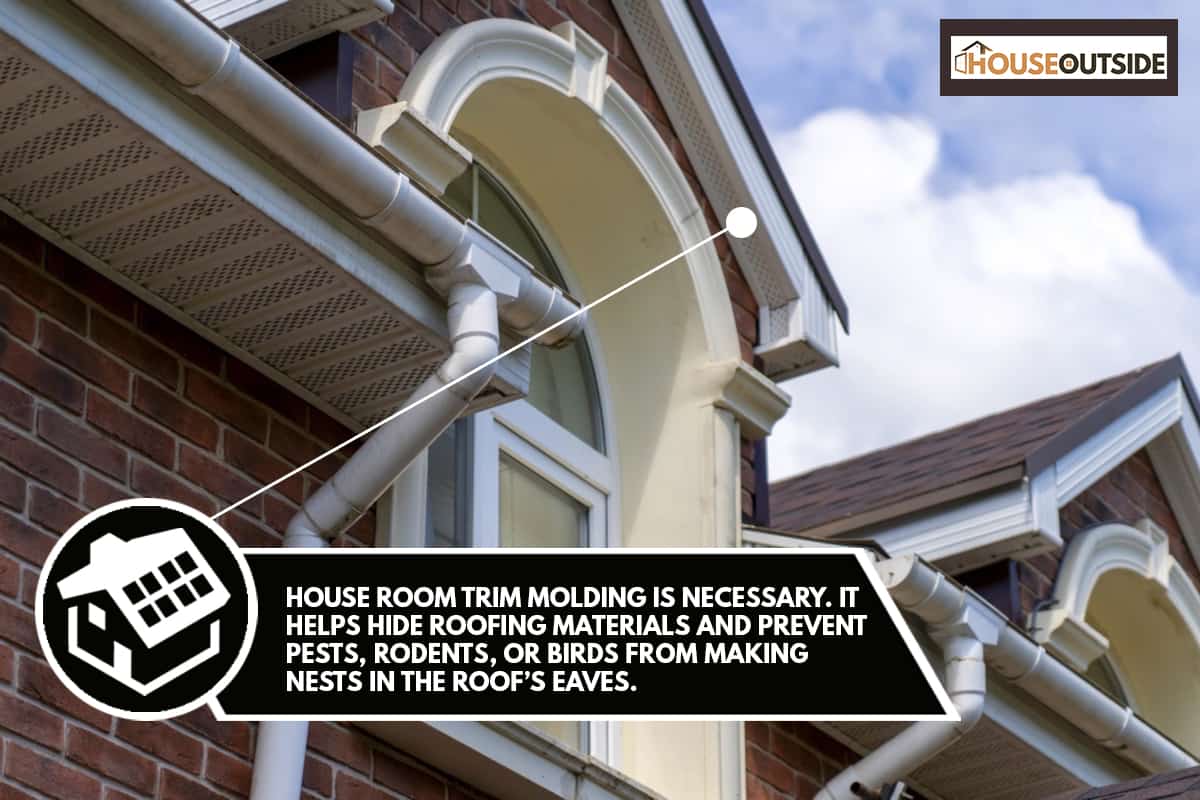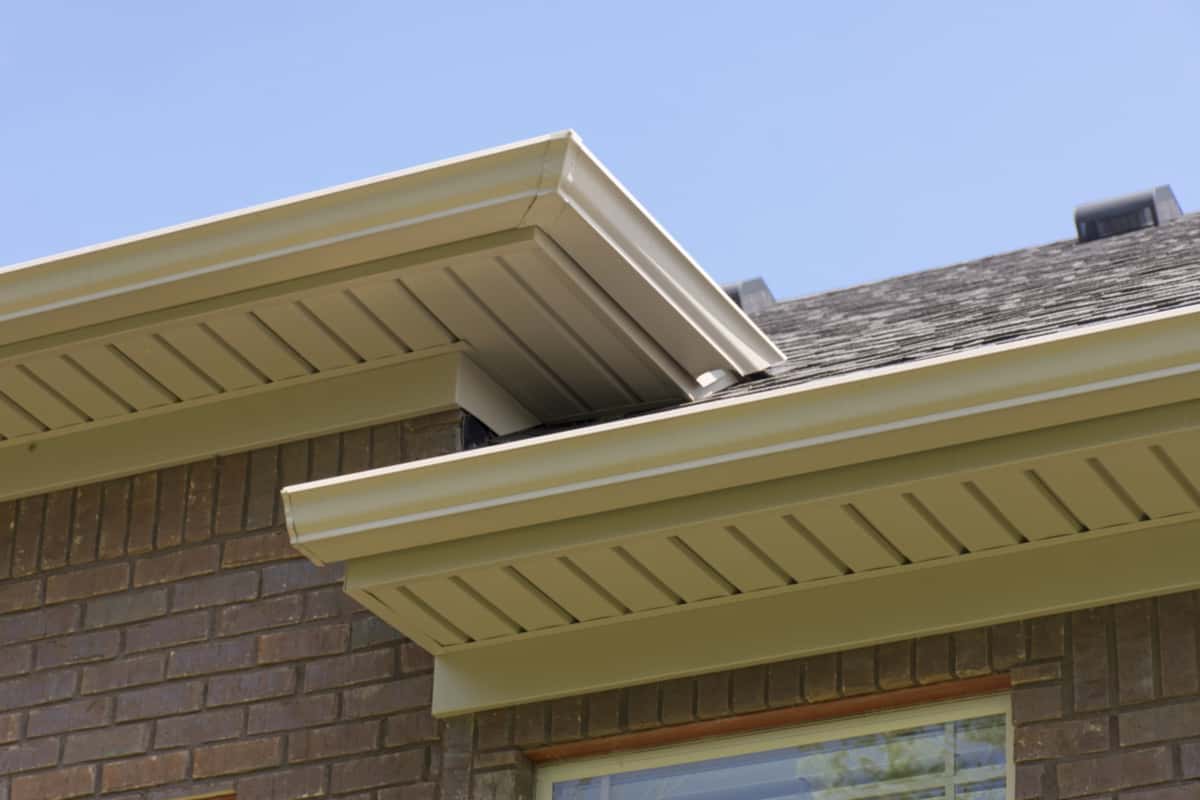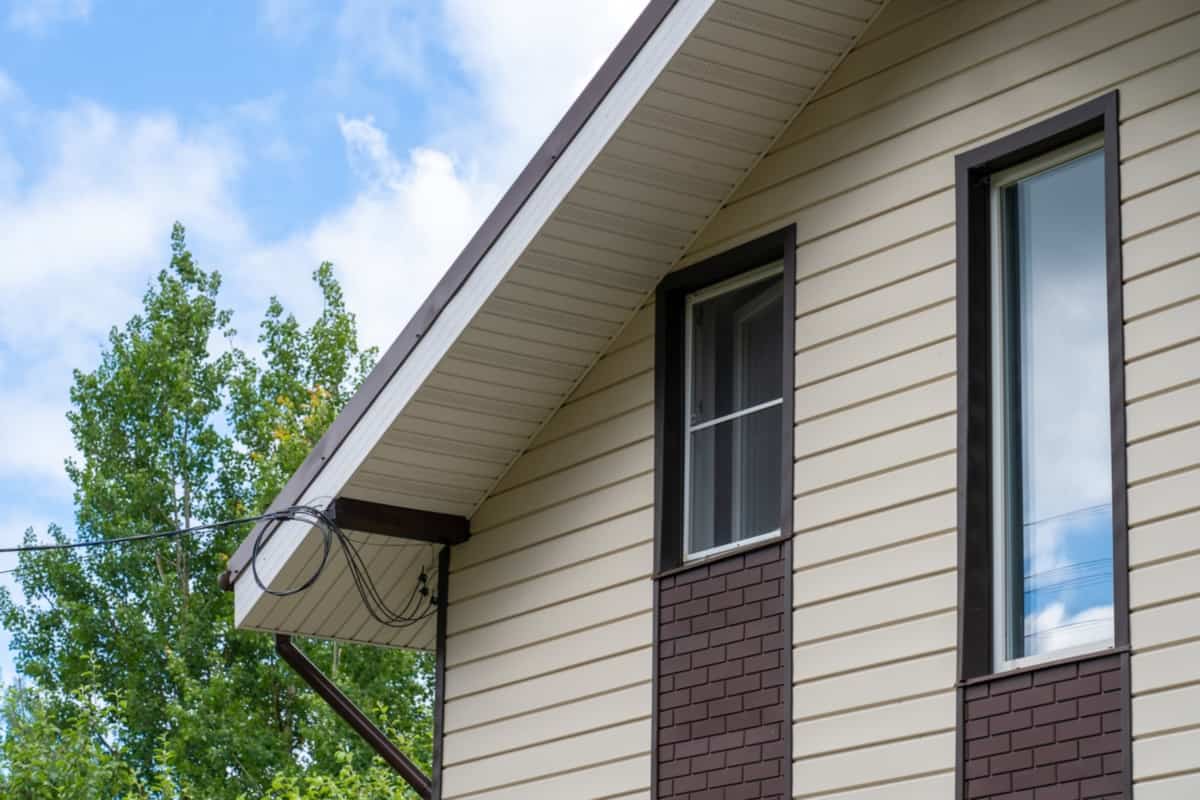After roofing your house is complete, the next thing that is installed is trim molding. However, is a house trim molding necessary, or is it solely for decoration? We've conducted thorough research and found informative answers.
House roof trim molding helps to hide roofing materials and prevent pests, rodents, or birds from making nests in the roof's eaves. Roof trim molding can be decorative.
Roof trim molding includes soffit, fascia, or gutters. Why so many names, and how are they related to the roof, you may ask. Well, read on as we break down the terminology step by step and explain their necessity.

Is There A Need For House Roof Trim Molding?
Yes, house roof trim molding is necessary. You see, the roof of your house is a sensitive area exposed to the elements, and it's visible from afar. Therefore, your roof trim molding must:
- Protect the roof in general from gnawing creatures that could destroy the rest of the structure. Once there's no access for pests to build nests and camp, your roof will last longer.
- Block any form of moisture. Water or ice should not find its way into the roof. Otherwise, you are bound to have to repair your roof sooner than expected due to high levels of moisture destroying the roofing material.
- Create a neat look on the outside. You don't want your neighbors thinking you couldn't finish your roof. Essentially, roof trim molding is like a neat hem on an outfit that makes the house look appealing.
It might be surprising to most homeowners how such minute details have such power and effect. To understand what builders and constructors do, you need to know what roof trim molding is.
What Is House Roof Trim Molding?

House roof trim molding compiles of several bits and pieces. However, house roof trim molding is a layman's term for combining all the roof sections.
Builders and contractors use different names for different sections. As a homeowner, you might feel left out when you don't comprehend what they are discussing. Here is a terminology guide to bring you up to speed with the constructor's jargon.
Frieze Boards

These frieze boards are primarily horizontal and are situated flush with the wall of the house. Frieze boards are located where the siding meets the soffit. But, they stick out and allow you to tuck the siding under them.
Soffits

Soffits are boards placed under the eaves to protect the underside of the roof from rain and winds. The soffit deters insects, pests, and birds from building nests under the roof. They also act as vents and create a comfortable atmosphere in the attic.
Fascia Boards

Fascia board trims hold the roof eaves and overhangs together for a balanced feel. Interestingly, fascia boards have the strength to hold the gutters in a lateral position. There are always two fascia boards; exposed and hidden.
Gutters
You can ask the constructors to sometimes hide the gutters behind the fascia inside the eaves or expose them wholly. Either way, they depend on the fascia to hold them in place. Gutters help drain the water away from the roof and the house, and they mustn't look shady on the house's facade.
Here are gutter downspout extensions on Amazon.
Boxends
Boxends are corners or edges where frieze boards and soffits meet. For a more aesthetic look, builders put trim and paint them.
Now that you know the trim types on your home's facade, the next step is to determine what materials all these trim moldings are.
Types Of Roof Trim Molding Materials
Building materials have to be flexible and durable. They have not evolved much, and the varieties on the market are the traditional ones. Additionally, these materials come in standard measurements, making it easier for builders to use them.
The most common materials are:
Metal
Metal is bendable, easy to use in roof trim moldings, and does not allow moisture to get into the roof. The ability of the metal to create smooth seams gives the moldings extra appeal.
Wood
One of the oldest materials used for roof trim moldings is hardwood. It's durable but expensive. Other cheaper alternatives are plywood and fiberwood.
PVC
PVC is a relatively new material but has made a mark as durable and versatile. It doesn't peel over time, and it retains color all through.
Fiber Cement
Alternatively, you can use fiber cement. To create the perfect shapes, manufacturers use molds. However, it is heavy and relatively expensive.
Decorative Roof Trim Molding

You can settle for plain roof trims with bold colors. Or, take it a step further and have more elaborate trim molding. Using roof trim moldings decoratively helps you make a statement and lets you imprint your personality on the house.
The designs have different patterns and styles with swirls, lines, and curves. Builders use different thicknesses of trim molding to create more illustrious shapes. Interestingly, over time different eras have contributed to the designs of modern-day roof trim molding.
Should The Roof Trim Molding Be The Same Color?
You won't find all your roof trim molding with the same material. The gutters can be metallic, the window trims are hardwood, and the fascia and soffit might be plywood.
All these different materials cannot find in one uniform color. Consequently, you should choose colors in the same spectrum or opposite colors on the color wheel. Please, don't overlook the overall color of the facade before selecting a color for the roof trim molding.
What Is The Best Color For Roof Trim Molding
The color of roof trim molding is essential. Homeowners might be at a loss of whether to settle for dark or light colors.
Check out this exterior paint for roof trim moldings with sealant on Amazon.
But, designers say bright, or light colors are ideal for roof trim moldings. Bright-colored trim molding helps the color of the facade pop. However, don't forget to stay within the color scheme of your house and roof. If you aren't adventurous, stick to white or cream as a safe option.
How Often Can You Repair Roof Trim Molding
Do repairs as soon you notice any damaged boards or trims. You should regularly check your roof and the trim molding during spring cleaning after long cold months.
Warped fascia, cracked soffits, nests, algae, and mold in the attic are sure signs you need to start repairs. Clean everything, apply new paint, and replace warped or damaged boards.
Remember, building codes don't allow homeowners to leave their homes unchecked to avoid unprecedented accidents. Ensure you do the repairs carefully without tampering with other parts that don't need repair.
How Much Does Roof Trim Molding Cost?
The cost of the trim will depend on the material used for making the trim. The design and location will add to the cost, not forgetting the labor cost if it isn't a DIY project.
Metal roof trim molding has an average cost of $2 to $4 per linear foot. PVC trims are expensive because they cost $6 to $12 per foot. On the other hand, wood trims can cost as much as $14 to $22 per foot.
The total cost, including labor, can range from $600 to $1,400 or more, depending on how much time the work requires.
Final Thoughts
House roof trim molding is not only for decoration but a building code requirement. Please choose the perfect roof trim molding considering your locality, climate, and the budget you've allocated for the work.
Stick to bright colors for the best results. But you mustn't overlook general maintenance. A leaking roof will destroy the rest of your house and put a dent in your pocket.
Check out these posts for more information and other ideas for your house.





